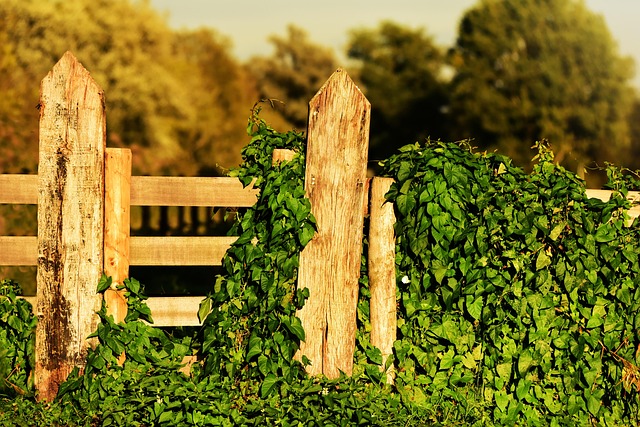DIY Fence Installation: A Comprehensive Guide for New Bedford Homeowners
Are you considering installing a new fence in your New Bedford, Massachusetts yard? This comprehensive guide will equip you with the knowledge to take on the project yourself. From selecting the perfect fence style to ensuring a sturdy and safe structure, we cover all aspects of DIY fence installation. Learn how to measure and plan your layout, prepare the ground, choose durable materials, and follow a step-by-step assembly process, leaving you with a beautiful new boundary wall tailored to your property.
- Understanding Your Fence Options for New Bedford Yards
- Measuring and Planning Your Fence Layout Effectively
- Preparing the Ground: Essential Steps Before Installation
- Choosing the Right Materials for Durability
- Step-by-Step Guide to DIY Fence Assembly
- Final Touches and Safety Considerations for Your New Fence
Understanding Your Fence Options for New Bedford Yards
When it comes to fencing your New Bedford, Massachusetts yard, there are numerous options to consider. The first step is to evaluate your specific needs and preferences, such as privacy, security, or aesthetic appeal. Wood fences offer a classic look and feel, requiring regular maintenance but providing natural beauty. Vinyl fences are low-maintenance and durable, with a wide range of colors and styles available. Chain link fences provide excellent security without breaking the bank, though they may not be as aesthetically pleasing to some homeowners.
Consider the size and layout of your yard when choosing a fence type. For smaller yards, a shorter, more delicate fence might be suitable, while larger yards might call for a taller, sturdier option. Remember to check local regulations regarding fence heights and materials before beginning installation to ensure compliance and avoid any potential issues with neighbors.
Measuring and Planning Your Fence Layout Effectively
When planning a DIY fence installation, effective measuring and layout are key to success. Start by identifying the perimeter of your desired fence area and marking it off with flags or chalk. This helps in visualizing the space you’re working with and ensures accurate measurements. Measure the length and height requirements for your fence, considering local building codes and regulations for materials and dimensions. Create a detailed plan that includes the placement of posts, panels, and any gates or openings, keeping functionality and aesthetics in mind.
A well-planned layout allows for precise cutting of materials, minimizing waste, and ensuring a secure fence structure. It’s crucial to account for any potential challenges like trees, shrubs, or utility lines that might affect your measurements. Regularly double-check your calculations and consult with local experts or online resources for specific guidelines tailored to New Bedford, Massachusetts.
Preparing the Ground: Essential Steps Before Installation
Before installing your fence, preparing the ground is a crucial step that cannot be overlooked. Start by clearing the area of any debris, plants, or rocks, ensuring a smooth and level surface. Digging and leveling the ground properly will provide a solid foundation for your fence posts and ensure long-lasting stability.
Mark out the perimeter of your desired fence line using stakes and string to guide you. This visual aid ensures precise measurements and helps you identify any potential challenges in the terrain, such as trees or utility lines, which may require special consideration during installation.
Choosing the Right Materials for Durability
When it comes to DIY fence installation, selecting durable materials is key to ensuring your new fence stands the test of time, especially in New Bedford’s varying climates. Opt for high-quality wooden or vinyl options known for their resistance to rot and decay. Treated wood, such as cedar, is an excellent choice due to its natural resistance to elements like moisture and insects. Alternatively, vinyl fences are low-maintenance and can withstand harsh winter conditions without warping or cracking.
Consider the fence’s exposure to sunlight, rain, snow, and wind when making your material decision. Regular cleaning and sealing will further enhance the longevity of your chosen fencing material, providing a robust and visually appealing barrier for your New Bedford property.
Step-by-Step Guide to DIY Fence Assembly
To tackle DIY fence installation, start by gathering all necessary materials including posts, rails, brackets, and fencing panels. Clear the area where your fence will be installed, removing any plants or debris that might interfere. Using a level, mark the post holes to ensure your fence is straight and secure. Dig the holes, making sure they’re deep enough for stable support (typically around 3/4 of the post’s height). Place concrete in the holes, allowing it to set completely before proceeding.
Next, insert the posts into the holes, ensuring they stand upright and level. Secure them with concrete anchors or braces as needed. Attach rails to the posts using brackets, aligning them evenly for a solid framework. Install fencing panels by connecting them securely to the rails using nails, screws, or specified hardware. Finally, inspect your handiwork for any gaps or misalignments and make adjustments as necessary.
Final Touches and Safety Considerations for Your New Fence
Once your fence is installed, it’s important to take care of some final touches and safety considerations. Check all posts and brackets for stability, ensuring the fence is securely fastened. Add a touch of paint or sealant to protect the wood from the elements, enhancing its longevity. Inspect the gate for smooth operation and adjust hinges as needed. Install a lock for added security if required. Keep an eye out for any loose nails or screws and address them promptly. Regular maintenance, such as cleaning and re-sealing, will keep your fence looking its best for years to come. Always remember safety first; ensure the area around the fence is clear of debris and hazards to prevent trips or falls.
